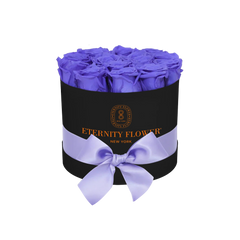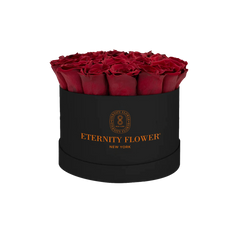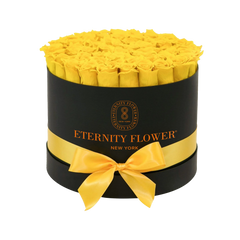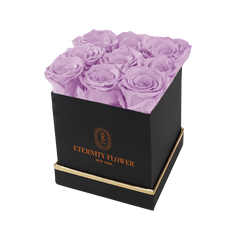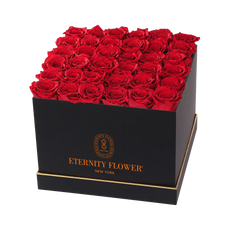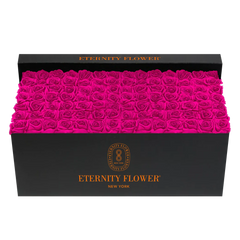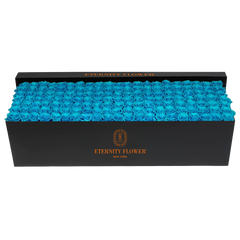All you plant and flower lovers, listen up! Have you ever thought about how many beautiful flowers that start with C? Get ready, because we're about to show you 36+ of these stunning beauties!
Prepare to be amazed by the wide range of colors, interesting shapes, and even surprising spots where you can find these flower treasures. Take your watering can as a metaphor and come with us on a blooming trip through the world of C-fabulous flowers!
List of Flowers that Start with C
Looking for a variety of beautiful flowers that start with the letter C? This collection is sure to get you excited about exploring flowers. Now is time to explore them!
1. Carnation

Carnations are known for their ruffled appearance and spicy fragrance. They come in various colors, each carrying its own symbolism. For example, red carnations symbolize love and admiration, while white carnations symbolize purity and luck.
- Origin: Carnations (Dianthus caryophyllus) are native to Eurasia. They are believed to have originated in the Mediterranean region.
- Where you can find: Carnations are cultivated worldwide for their beauty and fragrance. They are commonly found in gardens, floral arrangements, and as cut flowers.
2. Chrysanthemum
Chrysanthemums come in a variety of shapes, sizes, and colors. They are often associated with autumn due to their late-season bloom. In many cultures, chrysanthemums symbolize longevity, joy, and fidelity.
- Origin: Chrysanthemums, often simply called mums, originated in China.
- Where you can find: They are widely cultivated across the world, particularly in East Asia, where they hold significant cultural importance. They are also popular as ornamental plants in gardens and as cut flowers.
3. Cosmos
Cosmos flowers have a daisy-like appearance with a tubular center. They come in shades of pink, white, and purple, and they attract pollinators like bees and butterflies. Cosmos are known for their ability to thrive in poor soil conditions and for their long blooming season, which typically lasts from early summer to fall.
- Origin: Cosmos (Cosmos bipinnatus) is native to Mexico.
- Where you can find: They are cultivated as ornamental plants and are popular for their delicate, daisy-like flowers. Cosmos can be found in gardens, meadows, and along roadsides in various parts of the world.
4. Crocus
Crocuses are among the earliest flowering plants to bloom in spring, often appearing even before the last frost has passed. They have cup-shaped flowers that come in various colors, including purple, white, and yellow. Crocuses are known for their ability to naturalize, spreading and forming dense carpets of flowers over time.
- Origin: Crocuses are native to Europe, North Africa, and Asia.
- Where you can find: They are commonly found in gardens and lawns, particularly in regions with temperate climates.
5. Canna Lily
Canna Lilies are prized for their large, vibrant flowers and bold foliage. They come in a wide range of colors, including red, orange, yellow, and pink. In addition to their ornamental value, Canna Lilies are also grown for their edible roots, known as canna or achira, which are used in some cuisines. They thrive in moist, fertile soil and warm temperatures.
- Origin: Canna Lilies (Canna spp.) are native to tropical and subtropical regions of the Americas.
- Where you can find: They are cultivated worldwide for their colorful flowers and attractive foliage, often found in gardens, parks, and landscaping schemes.
6. Calla Lily
Calla Lilies are known for their trumpet-shaped flowers and long, smooth stems. They come in various colors, including white, yellow, pink, and purple. Calla Lilies symbolize purity, elegance, and rebirth, making them popular choices for weddings and other special occasions.
- Origin: Calla Lilies (Zantedeschia spp.) are native to southern Africa.
- Where you can find: They are cultivated worldwide for their elegant flowers and are commonly found in gardens, floral arrangements, and as cut flowers.
7. Camellia
Camellias are known for their large, showy flowers, which come in a variety of colors, including white, pink, red, and sometimes yellow. They typically bloom in late winter or early spring, adding color to the garden when few other plants are flowering. Camellias have cultural significance in many Asian countries and are often associated with love, affection, and gratitude.
- Origin: Camellias are native to eastern and southern Asia, particularly China and Japan.
- Where you can find: They are cultivated in temperate climates around the world for their attractive flowers and glossy evergreen foliage. Camellias are often found in gardens, parks, and as ornamental shrubs.
8. Columbine
Columbines are known for their unique, spurred flowers and finely divided foliage. They come in a variety of colors, including blue, purple, pink, yellow, and white. Columbines attract hummingbirds and butterflies with their nectar-rich flowers and have a charming, cottage garden appeal.
- Origin: Columbines (Aquilegia spp.) are native to North America, Europe, and Asia.
- Where you can find: They are commonly found in woodlands, meadows, and rocky areas, as well as cultivated in gardens for their delicate, bell-shaped flowers.
9. Coneflower

Coneflowers are known for their distinctive, cone-shaped flower heads and daisy-like petals. They are drought-tolerant and low-maintenance, making them popular choices for naturalistic landscapes and wildlife gardens. Coneflowers are also valued for their medicinal properties, particularly in herbal medicine, where they are believed to boost the immune system and aid in cold and flu prevention.
- Origin: Coneflowers (Echinacea spp.) are native to North America.
- Where you can find: They are commonly found in prairies, meadows, and open woodlands, as well as cultivated in gardens for their colorful flowers and medicinal properties.
10. Coral Bells
Coral Bells are known for their attractive, heart-shaped leaves in shades of green, purple, bronze, and silver. They produce slender, airy flower spikes in late spring or early summer, attracting hummingbirds and butterflies. Coral Bells are versatile plants that thrive in partial shade and well-drained soil, making them popular choices for borders, rock gardens, and container plantings.
- Origin: Coral Bells (Heuchera spp.) are native to North America.
- Where you can find: They are commonly found in woodlands, rocky slopes, and shady gardens, prized for their colorful foliage and delicate flowers.
11. Coreopsis
Coreopsis is known for its cheerful, yellow or golden flowers with a prominent center. It is a hardy and drought-tolerant plant, making it popular in landscaping for its long bloom period and low maintenance requirements. Coreopsis attracts pollinators like bees and butterflies and adds vibrant color to garden borders and wildflower gardens.
- Origin: Coreopsis, commonly known as tickseed, is native to North and South America.
- Where you can find: They are commonly found in prairies, meadows, and open woodlands, as well as cultivated in gardens for their bright, daisy-like flowers.
12. Cornflower
Cornflowers are known for their intense, azure-blue flowers, although they can also be found in shades of pink, white, and purple. They have a long history of cultivation and have cultural significance in many European countries. Cornflowers attract pollinators and are often used in wildflower mixes for their ornamental value and ability to naturalize.
- Origin: Cornflowers (Centaurea cyanus) are native to Europe.
- Where you can find: They are commonly found in fields, meadows, and along roadsides, as well as cultivated in gardens for their striking blue flowers.
13. Canterbury Bells
Canterbury Bells are known for their tall spikes of nodding, bell-shaped flowers in shades of blue, purple, pink, or white. They have a charming, old-fashioned appearance and are popular for their long-lasting blooms. Canterbury Bells prefer cool, moist conditions and are often grown as biennials, meaning they flower in their second year of growth.
- Origin: Canterbury Bells (Campanula medium) are native to Europe.
- Where you can find: They are commonly cultivated in gardens for their bell-shaped flowers and are often used as border plants or in cottage garden schemes.
14. Cyclamen
Cyclamens are known for their heart-shaped leaves with intricate silver marbling patterns and their unique, reflexed flowers in shades of pink, red, white, or purple. They bloom in late winter or early spring and are popular indoor plants for adding color to the home during the colder months. Cyclamens are also grown outdoors in mild climates and are prized for their shade tolerance and long blooming season.
- Origin: Cyclamen species are native to Europe, the Mediterranean region, and parts of Asia and Africa.
- Where you can find: They are commonly cultivated as ornamental plants for their attractive foliage and delicate, upswept flowers.
15. Celandine
Celandine is known for its cheerful, yellow flowers and deeply lobed leaves. It is a vigorous grower and can spread rapidly in favorable conditions, making it somewhat invasive in some regions. Celandine has a long history of medicinal use and is believed to have various healing properties, although it can also be toxic if ingested in large quantities.
- Origin: Celandine (Chelidonium majus) is native to Europe and western Asia.
- Where you can find: It is commonly found in woodlands, hedgerows, and disturbed areas, as well as cultivated in gardens for its bright yellow flowers.
16. Creeping Jenny
Creeping Jenny is known for its vibrant, chartreuse foliage and creeping habit. It forms dense mats of foliage and produces small, yellow flowers in late spring or early summer. Creeping Jenny is valued for its ability to cascade over walls, rockeries, and containers, adding texture and color to the landscape.
- Origin: Creeping Jenny (Lysimachia nummularia) is native to Europe and western Asia.
- Where you can find: It is commonly found in moist woodlands, along stream banks, and in wet meadows, as well as cultivated in gardens as a ground cover or trailing plant.
17.Chinese Lantern
Chinese Lantern is known for its bright orange to red papery husks that enclose the fruit. These lantern-like structures persist long after the plant has finished flowering, providing ornamental interest in the garden or dried flower arrangements. Chinese Lantern plants have green foliage and produce small, white flowers in summer. They are often grown for their decorative seed pods rather than their flowers.
- Origin: Chinese Lantern (Physalis alkekengi) is native to Asia and southeastern Europe.
- Where you can find: It is commonly cultivated as an ornamental plant for its distinctive, lantern-like seed pods.
18. Crocosmia
Crocosmia is known for its tall spikes of funnel-shaped flowers in shades of red, orange, and yellow. They bloom in mid to late summer and attract hummingbirds and butterflies. Crocosmia plants multiply readily, forming dense clumps over time. They are prized for their ornamental value and are often grown in borders, cottage gardens, and as cut flowers.
- Origin: Crocosmia species are native to southern and eastern Africa.
- Where you can find: They are commonly cultivated for their colorful, tubular flowers and sword-shaped foliage.
19. Columbine
Columbines are known for their unique, spurred flowers and finely divided foliage. They come in a variety of colors, including blue, purple, pink, yellow, and white. Columbines attract hummingbirds and butterflies with their nectar-rich flowers and have a charming, cottage garden appeal.
- Origin: Columbines (Aquilegia spp.) are native to North America, Europe, and Asia.
- Where you can find: They are commonly found in woodlands, meadows, and rocky areas, as well as cultivated in gardens for their delicate, bell-shaped flowers.
20. Cineraria

Cineraria is known for its large, showy flower heads in shades of blue, purple, pink, red, or white. They bloom in late winter or early spring and are popular indoor plants for adding color to the home during the colder months. Cineraria plants prefer cool temperatures and bright, indirect light. They are often grown as annuals or biennials and are prized for their long-lasting blooms and attractive foliage.
- Origin: Cineraria (Pericallis × hybrida) is native to the Canary Islands.
- Where you can find: They are commonly grown as indoor or outdoor ornamental plants for their colorful, daisy-like flowers.
21. Candytuft
Candytuft is known for its profuse and long-lasting blooms, which appear in spring and sometimes into early summer. It forms dense mats of evergreen foliage and is often used as a ground cover or edging plant in gardens and rockeries. Candytuft is drought-tolerant and low-maintenance, making it a popular choice for landscapes and borders.
- Origin: Candytuft (Iberis spp.) is native to Europe, North Africa, and western Asia.
- Where you can find: It is commonly cultivated for its clusters of small, white, pink, or purple flowers.
22. Cranesbill Geranium
Cranesbill Geraniums are known for their palmately lobed leaves and delicate, five-petaled flowers in shades of pink, purple, blue, or white. They bloom from spring to fall, attracting bees and butterflies with their nectar-rich flowers. Cranesbill Geraniums are valued for their ornamental value and are often grown as ground covers, border plants, or in mixed perennial beds.
- Origin: Cranesbill Geraniums (Geranium spp.) are native to temperate regions of the Northern Hemisphere.
- Where you can find: They are commonly found in gardens and naturalized in woodlands, meadows, and hedgerows.
23. Crown Imperial
Crown Imperial is known for its striking, pendulous flowers in shades of orange, yellow, or red, which hang beneath a tuft of green foliage. It blooms in late spring and is often used as a focal point in gardens or as a cut flower. Crown Imperial bulbs have a strong, musky odor and contain toxic alkaloids, making them deer-resistant but also requiring caution when handling.
- Origin: Crown Imperial (Fritillaria imperialis) is native to mountainous regions of Turkey, Iran, and Central Asia.
- Where you can find: It is commonly cultivated as an ornamental plant for its tall stems of bell-shaped flowers and distinctive crown of foliage.
24. Cotoneaster
Cotoneaster is known for its small, glossy leaves and clusters of white or pink flowers in spring, followed by bright red or orange berries in fall and winter. It is a versatile plant that can be used as a ground cover, hedge, or specimen shrub. Cotoneaster berries are attractive to birds and other wildlife, making it a valuable addition to wildlife gardens and landscapes.
- Origin: Cotoneaster species are native to temperate regions of Europe, Asia, and North Africa.
- Where you can find: They are commonly cultivated for their attractive foliage, colorful berries, and ability to tolerate a wide range of growing conditions.
25. Coreopsis
Coreopsis is known for its cheerful, yellow or golden flowers with a prominent center. It is a hardy and drought-tolerant plant, making it popular in landscaping for its long bloom period and low maintenance requirements. Coreopsis attracts pollinators like bees and butterflies and adds vibrant color to garden borders and wildflower gardens.
- Origin: Coreopsis, commonly known as tickseed, is native to North and South America.
- Where you can find: They are commonly found in prairies, meadows, and open woodlands, as well as cultivated in gardens for their bright, daisy-like flowers.
26. Coneflower
Coneflowers are known for their distinctive, cone-shaped flower heads and daisy-like petals. They come in various colors, including purple, pink, white, and orange. Coneflowers bloom from midsummer to fall and attract pollinators like bees and butterflies. They are also valued for their medicinal properties and are believed to have immune-boosting and anti-inflammatory effects.
- Origin: Coneflowers (Echinacea spp.) are native to North America.
- Where you can find: They are commonly found in prairies, meadows, and open woodlands, as well as cultivated in gardens for their colorful flowers and medicinal properties.
27. Coral Bells
Coral Bells are known for their attractive, heart-shaped leaves in shades of green, purple, bronze, and silver. They produce slender, airy flower spikes in late spring or early summer, attracting hummingbirds and butterflies. Coral Bells are versatile plants that thrive in partial shade and well-drained soil, making them popular choices for borders, rock gardens, and container plantings.
- Origin: Coral Bells (Heuchera spp.) are native to North America.
- Where you can find: They are commonly found in woodlands, rocky slopes, and shady gardens, prized for their colorful foliage and delicate flowers.
28. Calendula Officinalis
Calendula Officinalis is known for its profusion of orange or yellow flowers with daisy-like petals. Calendula flowers are edible and are used in salads, teas, and as a natural dye. They are also valued for their medicinal properties and are used in herbal medicine to soothe skin irritations and promote healing.
- Origin: Calendula Officinalis, commonly known as pot marigold, is native to southern Europe.
- Where you can find: They are cultivated worldwide for their bright, cheerful flowers and medicinal properties.
29. Cuckoo Flower

Cuckoo Flower is known for its clusters of pale pink to lilac flowers with four petals. It blooms in spring and is an important early nectar source for bees and butterflies. Cuckoo Flower is also the larval food plant for the Orange-tip butterfly. It prefers moist, fertile soil and partial shade and is often grown in wildflower gardens or as a naturalistic planting in wetland areas.
- Origin: Cuckoo Flower (Cardamine pratensis), also known as Lady's Smock, is native to Europe and western Asia.
- Where you can find: It is commonly found in damp meadows, marshes, and along stream banks, as well as cultivated in gardens for its delicate flowers.
30. California Poppy
California Poppy is known for its bright orange, cup-shaped flowers and finely divided, blue-green foliage. It blooms from late spring to early summer and is drought-tolerant and low-maintenance, making it suitable for xeriscaping and naturalistic plantings. California Poppy is the state flower of California and is often grown as an annual or short-lived perennial in gardens for its cheerful blooms and ability to attract pollinators.
- Origin: California Poppy (Eschscholzia californica) is native to the western United States and Mexico.
- Where you can find: It is commonly found in dry, open habitats such as grasslands, hillsides, and roadsides, as well as cultivated in gardens for its colorful flowers.
31. Campanula latifolia
Campanula latifolia is known for its robust growth habit and tall stems bearing clusters of large, bell-shaped flowers in shades of blue, purple, or white. It blooms in mid to late summer and attracts pollinators like bees and butterflies. Giant bellflower plants have coarse, hairy leaves and prefer moist, well-drained soil and partial shade. They are often grown in cottage gardens, borders, or naturalistic plantings.
- Origin: Campanula latifolia, commonly known as the giant bellflower, is native to Europe and Asia.
- Where you can find: It is commonly found in woodlands, meadows, and rocky slopes, as well as cultivated in gardens for its tall spikes of bell-shaped flowers.
32. Cape Primrose
Cape Primroses are known for their showy, tubular flowers in shades of pink, purple, blue, or white. They have glossy, dark green leaves and bloom throughout the year under favorable conditions. Cape Primroses prefer bright, indirect light and well-drained soil, making them popular indoor plants for adding color and beauty to the home.
- Origin: Cape Primrose (Streptocarpus spp.) is native to southern Africa.
- Where you can find: They are commonly cultivated as houseplants or in greenhouse environments for their colorful, trumpet-shaped flowers.
33. Celosia
Celosias are known for their distinctive, feathery flower heads that resemble flames or cockscombs. They come in various colors, including red, orange, yellow, pink, and purple, and can be grown as annuals or perennials depending on the species. Celosias bloom from summer to fall and are prized for their long-lasting flowers, which are often used in fresh or dried flower arrangements.
- Origin: Celosia species are native to tropical regions of Africa, Asia, and the Americas.
- Where you can find: They are commonly cultivated for their unique, brightly colored flowers and ornamental foliage.
34. Cardinal Flower
Cardinal Flower is known for its tall spikes of vibrant, scarlet-red flowers with tubular petals. It blooms in late summer and is a favorite of hummingbirds and butterflies. Cardinal Flower prefers moist, acidic soil and partial shade but can tolerate full sun with sufficient moisture.
- Origin: Cardinal Flower (Lobelia cardinalis) is native to eastern North America.
- Where you can find: It is commonly found in wetlands, stream banks, and marshes, as well as cultivated in gardens for its striking red flowers.
35. Clarkia
Clarkia plants are known for their delicate, four-petaled flowers in shades of pink, purple, or white. They bloom in spring or early summer and attract bees, butterflies, and other pollinators. Clarkias are often grown as annuals and are valued for their ability to naturalize in wildflower gardens and landscapes. They prefer well-drained soil and full sun to partial shade.
- Origin: Clarkia is a genus of flowering plants native to western North America.
- Where you can find: They are commonly found in meadows, grasslands, and open woodlands in regions with mild climates, as well as cultivated in gardens for their attractive flowers.
36. Clover
Clovers are members of the legume family and are known for their trifoliate leaves and round flower heads composed of small, pea-like flowers. They come in various species, including white clover, red clover, and alsike clover, each with its own growth habit and preferred growing conditions.
- Origin: Clovers (Trifolium spp.) are native to Europe, Asia, and Africa, but they have been naturalized in many other parts of the world.
- Where you can find: They are commonly found in lawns, pastures, and open fields, as well as cultivated as forage crops and cover crops.
37. Cockscomb

Cockscomb is known for its distinctive, crested flower heads that resemble the comb of a rooster. They come in various colors, including red, orange, yellow, pink, and purple, and can be grown as annuals or perennials depending on the species.
- Origin: Cockscomb (Celosia argentea var. cristata) is native to tropical regions of Africa and Asia.
- Where you can find: They are commonly cultivated for their unique, brightly colored flowers and ornamental foliage.
Conclusion
The beautiful group of flowers that start with the letter "C" includes a wide range of types, from the ruffled, spicy-smelling carnations that stand for love and purity to the bright, flame-like celosias. Different parts of the world, from the Mediterranean to the warm Americas, have given these flowers their unique colors and shapes. This beautiful tapestry of flowers, including garden favorites, wildflowers, and indoor plants, shows how intricately plant life and ecosystems are connected.






